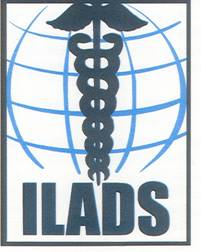
SHARE THIS ARTICLE:
ILADS: New Lyme Treatment Guidelines
The International Lyme & Associated Diseases Society, ILADS, has announced the publication of its new 2014 guidelines: Evidence Assessments and Guideline Recommendations in Lyme disease: The Clinical Management of Known Tick Bites, Erythema Migrans Rashes and Persistent Disease, published in the August 2014 edition of the journal Expert Review of Anti-infective Therapy. Instead of a fixed duration for therapy, the Guidelines encourage clinicians to base therapy on the patient’s response to treatment, including follow-up and therapy adjustments and take patient values into consideration.
ILADS, the first organization to issue Lyme disease guidelines which comply with the standards set by the Institute of Medicine for developing trustworthy protocols, provides a rigorous review of pertinent medical literature and contains recommendations for Lyme disease treatment based on the Grading of Recommendations Assessment, Development, and Evaluation (GRADE) process. The Cochrane Collaboration and the World Health Organization also use this review format, according to ILADS Guidelines author, Lorraine B. Johnson, JD, MBA.
of Medicine for developing trustworthy protocols, provides a rigorous review of pertinent medical literature and contains recommendations for Lyme disease treatment based on the Grading of Recommendations Assessment, Development, and Evaluation (GRADE) process. The Cochrane Collaboration and the World Health Organization also use this review format, according to ILADS Guidelines author, Lorraine B. Johnson, JD, MBA.
The Guidelines say current antibiotic protocols used by many physicians to prevent or treat Lyme disease are inadequate, leading to an increased risk of Lyme disease developing into a chronic illness. According to Daniel Cameron, M.D., M.P.H., lead author, “Chronic manifestations of Lyme disease can continue long after other markers of the disease, such as the erythema migrans rash, have resolved. Understanding this reality underlies the recommendation for careful follow-up to determine which individuals with Lyme disease could benefit from additional antibiotic therapy.”
The 2014 Guidelines replace the previous ILADS treatment guidelines published in the same journal in 2004. Click here for ILADS press release on the new guidelines.*
The Lyme Disease Association, Inc., LDA, supports the right of doctors to utilize clinical discretion in treating Lyme disease and the consideration of patient values in the process. The new 2014 ILADS Guidelines provide for those important tenants. Physicians and patients alike should have availability of and become familiar with the Guidelines to ensure the best possible Lyme disease treatment outcome.
*Author affiliations: Cameron is President of International Lyme and Associated Diseases Society. Johnson is Executive Director of Lymedisease.org. Maloney is a Provider of continuing medical education courses on tick-borne diseases.

Elizabeth Maloney, MD, Wyoming, MN, one of the authors, has been a speaker/facilitator at several recent LDA/Columbia Lyme and tick-borne diseases conferences (LDA stock photo)





